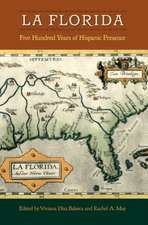Looking South: Race, Gender, and the Transformation of Labor from Reconstruction to Globalization: Southern Dissent Series
Autor Mary E. Fredericksonen Limba Engleză Paperback – 31 mar 2011
Links the global and local in new ways that point to a model for future work in the field. Richard Greenwald, Drew University
Frederickson has delivered compelling essays that brim with fascinating details and cogent observations about the past, present, and future of working people in the South. Connecting the New South, the Nuevo South, and the Global South seamlessly, she writes southern workers onto a world stage. Cindy Hahamovitch, College of William and Mary
Workers in the contemporary Global South the developing nations of Central and Latin America, Africa, and much of Asia live and work within a model of industrial development that first materialized in the red brick mills of the New South in the early twentieth century. Continuing through the present day, this model became the prototype used by U.S. companies as they expanded globally.
This development has had far-reaching effects on both workers and consumers at home and abroad. Unlike earlier models of industrialization in the United Kingdom and New England, in which regulatory laws, worker guilds, and unionization restrained the power of manufacturers, New South industrialization sustained and fostered persistent patterns of corporate control, low wages, and an antiunion climate reinforced by state and local governments.
While little of what we are witnessing in the Global South is new, the scale and scope of contemporary industrial development around the world are unprecedented. In "Looking South," ""Mary E. Frederickson outlines the events, movements, and personalities involved in resisting industry s relentless search for cheap labor. In eight compelling essays, she""challenges us to better understand the complex historical landscape of the American South and its role in shaping the twenty-first-century world in which we live."
Preț: 206.20 lei
Nou
39.46€ • 41.20$ • 32.66£
Carte tipărită la comandă
Livrare economică 04-18 aprilie
Specificații
ISBN-10: 0813042275
Pagini: 328
Dimensiuni: 152 x 229 x 19 mm
Greutate: 0.49 kg
Editura: University Press of Florida
Seriile Southern Dissent Series, Southern Dissent













